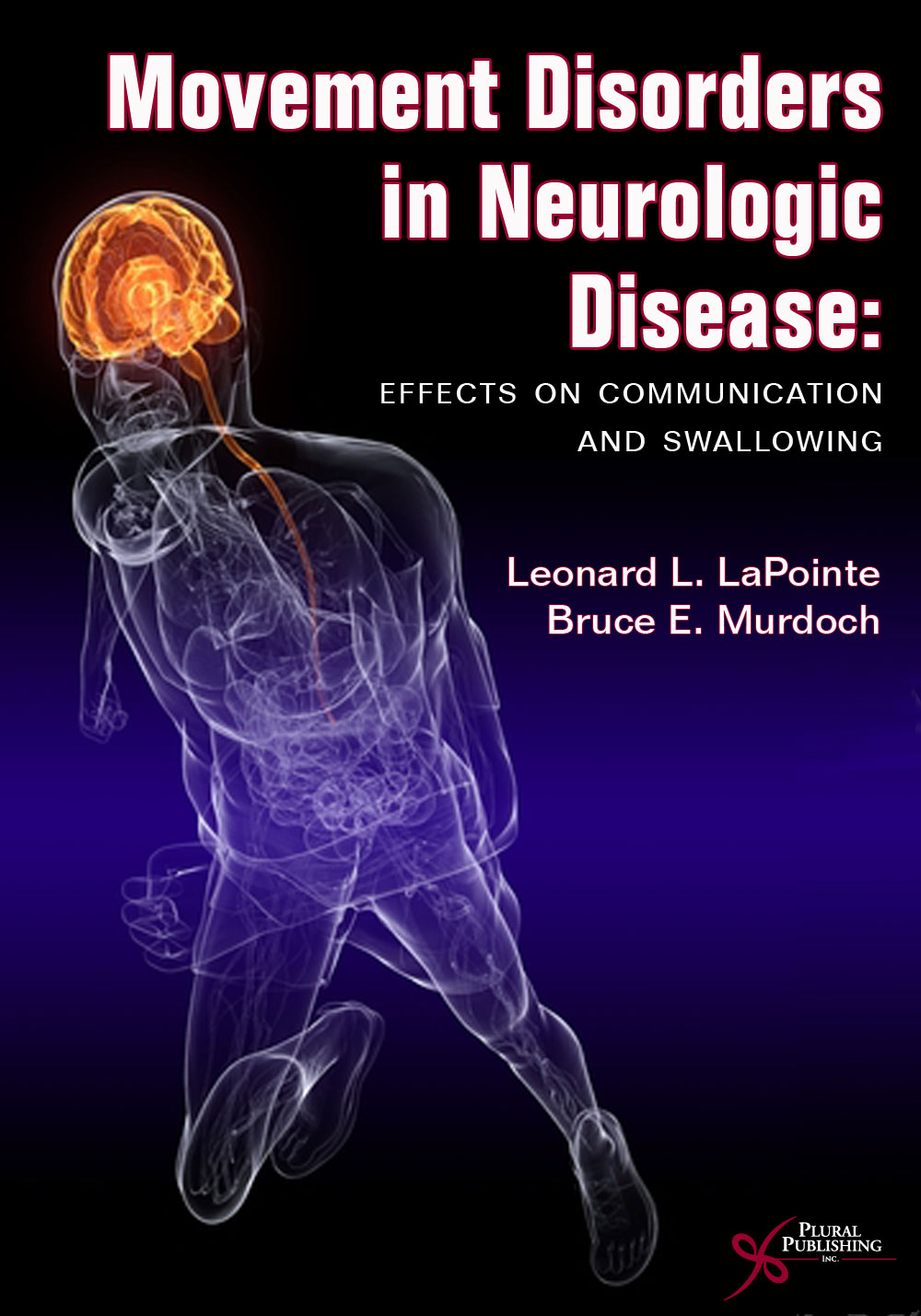
Movement Disorders in Neurologic Disease: Effects on Communication and Swallowing
First Edition
Leonard L. LaPointe, Bruce E. Murdoch
Details: 232 pages, B&W, Softcover, 7" x 10"
ISBN13: 978-1-59756-152-5
© 2014 | Available
Purchase Print Book
Price: $139.95
Movement Disorders in Neurologic Disease: Effects on Communication and Swallowing addresses a wide range of medical disorders that involve disturbances of muscle tone and muscle control, including Parkinson disease, ataxia, spasmodic dysphonia, and Huntington disease. These conditions can impact the motor control systems and often affect the linguistic and cognitive systems. For each disorder, the book provides an overview, signs and symptoms, associated genetics, effects on communication and swallowing, risk and protective factors, treatment decision-making, and more. The authors also offer valuable insights into these conditions to encourage a level of understanding that will ensure multidisciplinary, professional communication as well as planning and implementation of efficient intervention strategies.
Supported by numerous graphs, figures, clinical photographs, and case studies, this unique book is an essential resource for practitioners and researchers in the field of neurogenic speech and swallowing disorders.
Reviews
"The target audience for this book are clinicians and researchers in the area of neurogenic speech and swallowing disorders, but it would also be an informative resource for those seeking to advance their knowledge specific to movement disorders. The book opens with a brief introduction to movement disorders and a very useful appendix of terminology and descriptions relevant to the area. The list would be useful to pin on your notice board to allow you to quickly and easily remind yourself of the distinction between clonus, myoclonus, and rhythmic myoclonus (eeek!)...
Chapter 5 describes the clinical course of the major movement disorders associated with the occurrence of motor speech and/or language disturbances, including PD, Huntington's disease, Dystonia, and Tourette syndrome. This is an interesting and informative chapter which highlights the influence of a number of factors on the progress of the disease and the prognosis... The book concludes with plans, ideas, and thoughts on the future of movement disorders which prove enlightening and interesting reading...
As a whole the readability and content of Movement Disorders in Neurologic Disease: Effects on Communication and Swallowing merit praise."
—Fiona Hill, Senior Speech and Language Therapist, AMNCH Hospital, Tallaght, Update Magazine (2014)
Contributors
1 Introduction, Definitions, Foundations, and Scope
Leonard L. LaPointe
2 Etiologies of Movement Disorders
Leonard L. LaPointe
3 Characteristics of Movement Disorders
Leonard L. LaPointe
4 Differential Effects of Contemporary Treatments for Movement Disorders on Limb and Speech Function
Bruce E. Murdoch
5 Course of the Diseases
Bruce E. Murdoch
6 Principles of Management
Bruce E. Murdoch
7 Speech Impairments Associated with Movement Disorders: Neuromotor Control Systems
Bruce E. Murdoch
8 Swallowing and Nutritional Aspects
Julie A. G. Stierwalt
9 Language and Cognitive Effects
Leonard L. LaPointe
10 Medical and Surgical Treatments
Bruce E. Murdoch
11 The Future of Movement Disorders
Leonard L. LaPointe
Glossary
Index


